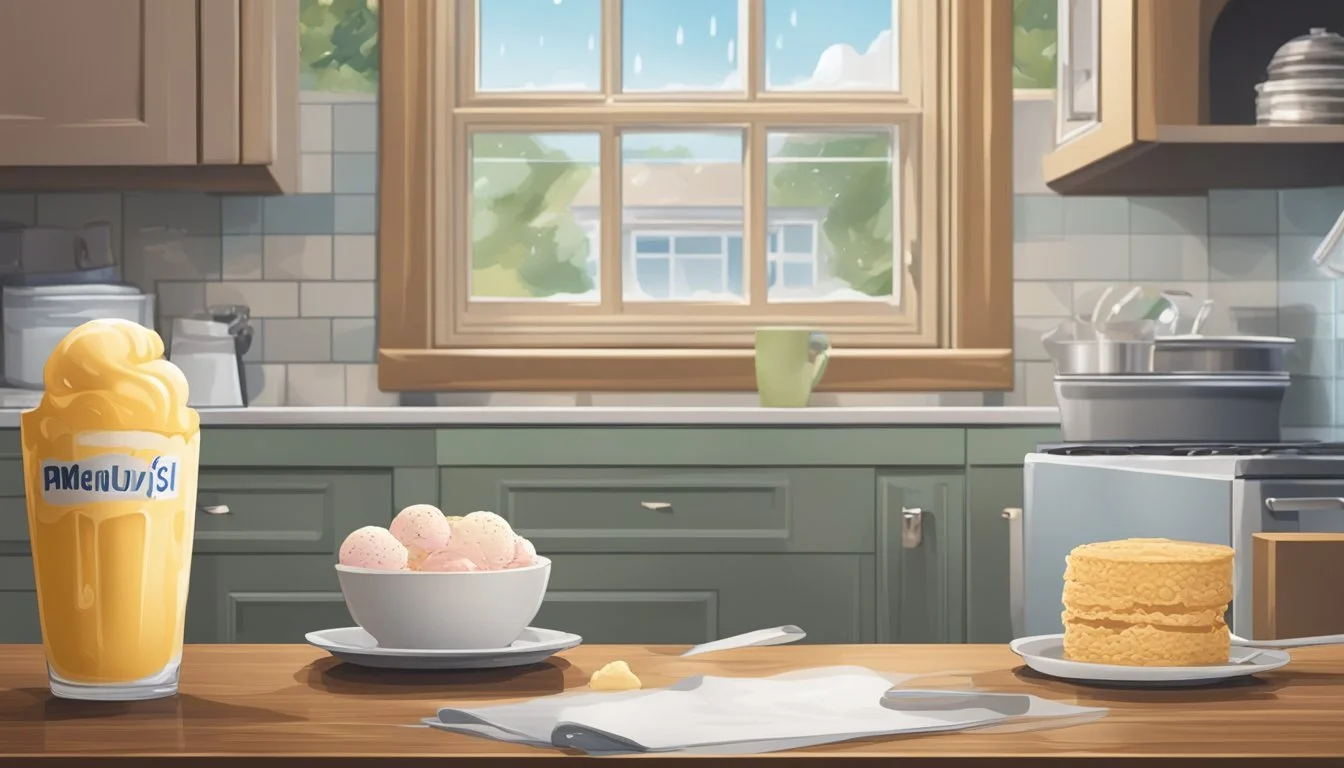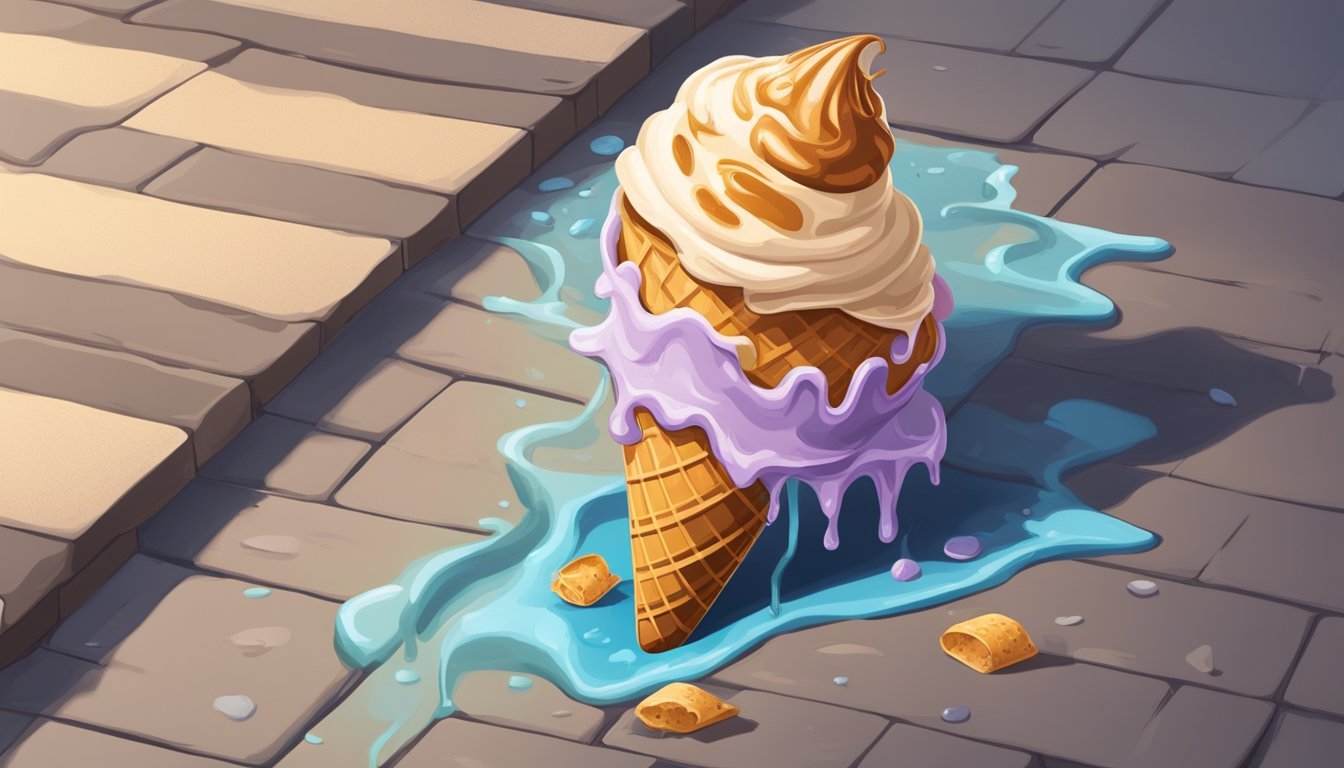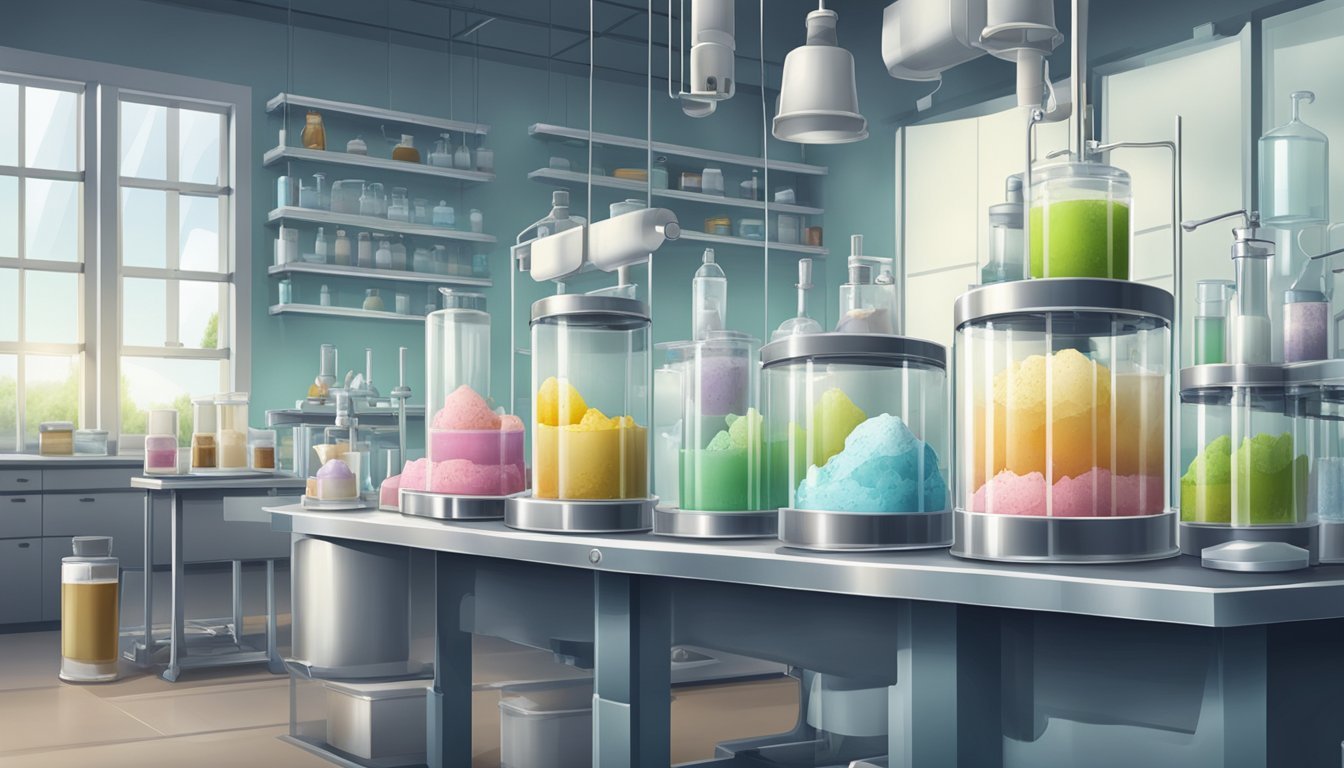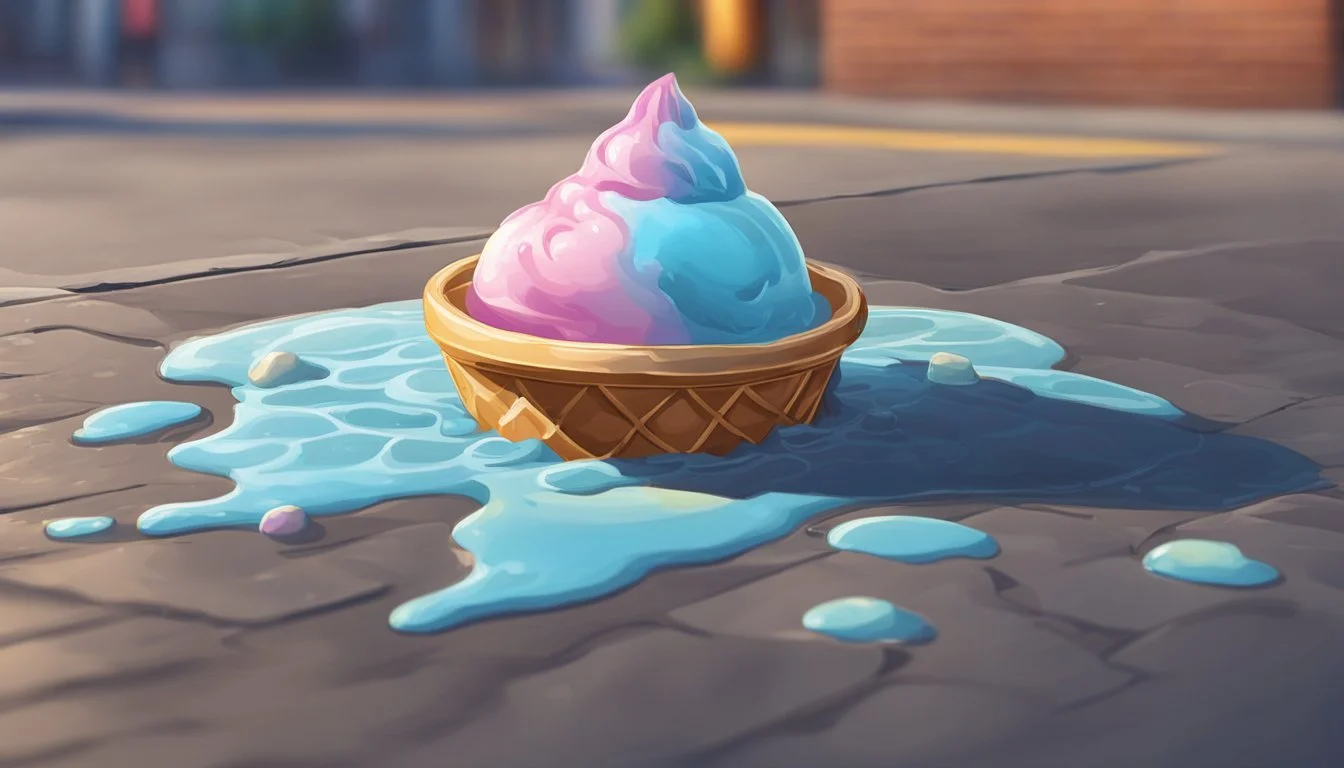How Long Does Ice Cream Last?
Understanding Shelf Life and Storage Tips
Ice cream, a beloved frozen treat, has a shelf life that varies depending on whether it is store-bought or homemade. Generally, commercial ice cream, which is laden with preservatives, can last up to a year in the freezer. However, homemade varieties tend to have a shorter freezer life, primarily due to the absence of preservatives and sometimes less-than-ideal storage conditions. The key to maximizing ice cream's longevity lies in consistent temperature control; a freezer set to 0 degrees Fahrenheit (-18 degrees Celsius) is ideal for slowing down the growth of bacteria and preventing freezer burn.
When it comes to unopened ice cream, the expectation is that it will retain its quality for about 2 to 4 months in optimal freezer conditions. Once opened, if stored correctly, it can last for a similar timeframe, although its quality might deteriorate faster due to exposure to air and the introduction of ice crystals. Proper storage involves using a tightly sealed container to minimize exposure to air and moisture, which can lead to textural changes and the growth of ice crystals. Some aficionados even suggest placing a layer of plastic wrap on the surface of the ice cream before sealing the container to further protect the dessert's integrity.
Storage conditions are crucial not only for preserving taste and texture but also to keep ice cream safe for consumption. An unsteady freezer temperature or extended exposure to higher temperatures, such as leaving ice cream out on the counter or in a hot car, can cause it to melt and potentially spoil. Repeated thawing and refreezing can also compromise the quality of ice cream, so it's best to keep it stowed away in the coldest part of the freezer and consume it within the recommended time frame for a delicious and safe experience.
Understanding Ice Cream Composition
Ice cream's longevity and quality are closely linked to its composition, which primarily includes dairy, sugars, and, in some cases, preservatives. These ingredients play a critical role in ice cream’s texture and shelf life.
Ingredients Overview
Ice cream typically consists of a mixture of dairy products such as milk and cream, sweeteners like sugar or corn syrup, and flavorings. The base combination can also include non-dairy alternatives for those with dietary restrictions. This foundation is important as it determines the ice cream's initial texture and freeze-thaw stability.
Dairy Products:
Milk - Adds proteins and water content.
Cream - Provides fat, which enhances creaminess and flavor.
Sweeteners:
Sugar - Contributes to sweetness and affects freezing point.
Flavorings and Additives:
Natural or artificial flavors such as vanilla or chocolate.
Stabilizers like guar gum to maintain texture consistency.
The Role of Preservatives
Preservatives in ice cream are added to extend shelf life by inhibiting the growth of microorganisms. Not all ice cream contains preservatives, but those that do may retain their quality for a longer period. The presence of preservatives can help maintain the desired texture of ice cream by preventing the formation of large ice crystals, which can occur in products stored for extended periods.
Common Preservatives:
Calcium sulfate
Potassium sorbate
Preservatives are more prevalent in commercial ice cream compared to homemade versions, which typically lack these additives and thus may have a shorter freezer life. The role of preservatives, alongside proper storage, is a key factor in the longevity of an ice cream product.
Storage Fundamentals
To ensure the longevity of ice cream, one must focus on maintaining the appropriate freezer temperature and ensuring the ice cream lid is used properly to maintain a tight seal. These storage fundamentals are crucial to preserving the ice cream's quality and reducing the risk of freezer burn.
Optimal Freezer Temperature
The optimal freezer temperature for ice cream storage is -18°C (-0.4°F) or lower. It's essential to keep the freezer at a consistent temperature to prevent thawing and refreezing, which can degrade the ice cream's texture and flavor. A steady, sub-zero environment ensures that the ice cream remains frozen, preventing the formation of large ice crystals and preserving the dessert's smooth consistency.
Proper Lid Usage and Seal
A proper seal on the ice cream container prevents moisture and air from entering, both of which can lead to the formation of ice crystals and freezer burn, negatively affecting the ice cream's quality.
Before storing: Press a piece of plastic wrap or waxed paper directly onto the ice cream's surface.
After scooping: Replace the ice cream container lid promptly and ensure it is tightly closed.
By following these storage basics, one safeguards the ice cream against the common pitfalls of improper freezing, extending its shelf life and maintaining the quality expected of a frozen treat.
Factors Affecting Ice Cream Shelf Life
The shelf life of ice cream is influenced by a myriad of specific factors, most notably the set expiration date and the consistency of the storage temperature. These elements are paramount in determining how long ice cream retains its optimal quality.
Impact of Expiration Date
The expiration date on an ice cream container serves as the manufacturer's guarantee of peak quality. Past this date, there may be a noticeable decline in the ice cream's texture and flavor. This date is based on the presumption of proper storage conditions since production.
Effects of Temperature Fluctuations
To maintain its characteristic texture, ice cream must be stored at a stable temperature below -18°C (-0.4°F). Fluctuations can cause ice crystals to form, leading to freezer burn that severely affects the ice cream's quality. Freezer burn may make the ice cream dry and grainy, diminishing its originally smooth and creamy texture. A consistent storage temperature ensures that ice cream remains free from such degradation for as long as possible within its shelf life.
Signs of Spoilage and Quality Loss
When assessing ice cream for spoilage and quality loss, one should look for physical changes and alterations in taste and smell. These indicators help to determine if the ice cream has gone past its prime.
Physical Changes
Ice cream's appearance can signal its condition. Large ice crystals forming on the surface or within the ice cream can indicate it has been stored for too long or temperature fluctuations have occurred, leading to freezer burn. Freezer burn typically presents as a leathery, dry layer and contributes to a decline in quality, though the ice cream may still be safe to eat. The ice cream should also maintain a consistent color throughout; any discoloration could signify spoilage.
Altered Taste and Smell
A good approach to assessing ice cream quality also involves a cautious taste and smell test. Ice cream that has gone bad might have an off smell or taste sour, which is a clear indicator of spoilage. Taste can be affected by exposure to other foods in the freezer, which may lead to off flavors. Fresh ice cream generally has a sweet, creamy scent and flavor, and any deviation from its original taste profile suggests quality loss.
Freezing and Thawing Guidelines
Proper freezing and thawing practices ensure that ice cream retains its quality and minimizes deterioration. It's crucial to manage temperature fluctuations to prevent the formation of ice crystals and freezer burn, which degrade the taste and texture of ice cream.
How to Thaw Ice Cream
To thaw ice cream, it is advisable to transfer the container from the freezer to the refrigerator for about 10 to 20 minutes prior to serving. This allows the ice cream to soften uniformly, preventing it from becoming too runny or developing a grainy texture. Ice cream should never be thawed at room temperature, as this can lead to bacterial growth and a risk to food safety.
Refreezing Ice Cream: Pros and Cons
Pros:
Refreezing ice cream is acceptable if it has been thawed in the refrigerator and not left at room temperature for an extended period.
It can reduce food waste if the ice cream hasn't fully melted.
Cons:
Frequent temperature changes can contribute to freezer burn and the formation of large, unpalatable ice crystals.
The texture and flavor may be significantly compromised after refreezing, leading to a less enjoyable experience.
Homemade vs. Store-Bought Ice Cream
When comparing the longevity of homemade versus store-bought ice cream, one must consider factors such as preservatives and storage methods that directly affect their shelf life.
Homemade Ice Cream Shelf Life
Homemade ice cream typically lacks the preservatives found in commercial products, potentially reducing its shelf life. When properly stored in an airtight container at 0°F (-18°C), it can last up to three months. Imperfect sealing allows air to introduce ice crystals, affecting texture and taste.
Store-Bought Ice Cream Longevity
Store-bought ice cream, in contrast, often contains preservatives that extend its shelf life. Unopened and kept frozen at the consistent temperature of 0°F, one can expect store-bought ice cream to last 2-4 months. Maintaining an unbroken cold chain is key to preserving its intended shelf life.
Safe Consumption and Health Considerations
When it comes to ice cream, knowing when it's time to discard and understanding the risks of foodborne illness are crucial. Consumers should be aware of the signs that ice cream has surpassed its peak, as well as the health implications of consuming expired products.
Recognizing When to Discard Ice Cream
One should discard ice cream if it shows clear signs of spoilage such as:
Color changes: If the ice cream has developed discolored spots or an overall change in color, this could indicate freezer burn or contamination.
Texture alterations: An icy or crystallized texture suggests multiple thaw and refreeze cycles, compromising the quality and safety.
Off odors: Any unusual or sour smells are a direct indicator that the ice cream may not be safe to consume.
Taste: If the ice cream tastes off, even without the physical signs, it’s best to err on the side of caution and throw it away.
Products that have simply passed their "best by" date may not necessarily be harmful, but they might not provide the best sensory experience.
Understanding Foodborne Illness Risks
Eating ice cream that has been improperly stored or has expired can lead to health risks, including foodborne illness caused by bacteria such as:
Bacteria Possible Impact Listeria Can cause serious infection, often due to prolonged improper storage. Salmonella Possibly present in products made with raw or undercooked eggs
Severity of Illness: The effects can range from mild gastrointestinal discomfort to severe, life-threatening conditions, particularly in vulnerable populations such as the young, elderly, or immunocompromised.
Preventive Measures: Proper storage at temperatures below -18°C (-0.4°F) and strict adherence to sanitation can minimize the risks. Always inspect ice cream before consumption, especially if it has been stored for a while or if there are concerns about freezing conditions.
Maximizing Ice Cream Enjoyment
Enjoying ice cream at its best involves proper scooping techniques and storage practices to preserve its creamy texture and freshness. These methods ensure every serving is as delightful as the first.
Best Practices for Scooping
Using the correct scooping method maintains the ice cream's structure and creamy texture. Always use a proper ice cream scoop rather than a regular spoon, as this is designed to glide smoothly through the frozen treat. To scoop effectively:
Pre-warm the scoop in hot water before slicing into the ice cream. This makes the tool glide more easily and forms a more satisfying scoop.
Scoop with confidence: Use a firm, steady motion to carve out each serving. This method helps preserve the rest of the ice cream's texture by limiting the exposure to heat and repeated thawing.
Extending Freshness and Flavor
Storing ice cream correctly is crucial for maintaining its freshness and preventing ice crystals from forming, which can alter its original creamy texture. Here are some storage tips to keep in mind:
Temperature: Keep ice cream stored at a consistent -18°C (-0.4°F) or below to minimize ice crystal formation.
Airtight containers: If the ice cream is homemade or transferred from its original packaging, store it in airtight containers. This practice reduces the risk of freezer burn and flavor loss.
Reduce exposure: Minimize the time ice cream is exposed to warmer temperatures, including during scooping, to prolong its optimal condition.
By adhering to these scooping and storage recommendations, enthusiasts can ensure each bowl of ice cream remains as fresh and enjoyable as possible.
Culinary Applications and Recipes
When considering the shelf life of ice cream, chefs and home cooks creatively incorporate it into various desserts (What wine goes well with desserts?) and recipes. These culinary practices not only enhance the flavor and texture of the dishes but also provide innovative ways to enjoy ice cream before it's past its prime.
Incorporating Ice Cream in Desserts
Cake: Ice cream can be layered within cakes to create a frozen dessert that's perfect for celebrations, particularly birthday cakes. To maintain the dessert's structure, they should freeze each layer before assembly.
Example Dessert: Ice Cream Cake Roll
Ingredients: Vanilla ice cream, chocolate sponge cake
Method: Spread softened ice cream on the sponge, roll it tightly, and refreeze.
Creative Ice Cream Recipes
Original ice cream recipes offer a chance to tailor flavors and use ice cream in distinctive ways. The freshness of the ice cream contributes significantly to these recipes.
Original Recipe: Honey Lavender Ice Cream
Ingredients: Cream, honey, lavender, egg yolks
Method: Infuse lavender into the cream, blend with a custard base, churn, and freeze.
Both applications rely on fresh ice cream to deliver the best taste and texture, ensuring that culinary creations are of the highest quality.
Environmental and Economic Aspects
The shelf life of ice cream not only affects consumer enjoyment but also has broader implications for the environment and economy, specifically in terms of food waste and the costs associated with storage.
Food Waste Implications
Understanding the longevity of ice cream is pivotal in reducing food waste. When consumers are informed about how long ice cream lasts, they are better equipped to consume it before it spoils, thus decreasing waste. Improper storage leading to spoilage or the formation of ice crystals can diminish the quality of ice cream, increasing the likelihood that it will be discarded, contributing to the problem of food waste.
Storage Efficiency and Cost
Efficient freezer storage is crucial for maintaining ice cream quality and extending its shelf life, which can also have economic benefits. The cost associated with powering freezers for both retailers and consumers can be significant. Furthermore, the use of efficient and well-sealed containers can prolong shelf life, prevent freezer burn, and ultimately save money on electricity and replacement costs due to spoilage.
Home Storage: Typical home storage solutions may lead to faster deterioration of ice cream quality due to the use of improper containers.
Commercial Storage: Retailers invest in high-efficiency freezers to preserve ice cream quality, which, while more costly upfront, can save money and reduce environmental impact over time.
Advanced Ice Cream Science
Before delving into the complexities of ice cream's longevity, it is essential to understand the foundational science behind its creation. This includes the churning process and the nuances of freezing that contribute to ice cream's texture and shelf life.
Understanding the Churning Process
Churning ice cream is a crucial step in achieving the desired creamy texture. The science behind the churning process involves the incorporation of air into the ice cream mixture. As the ice cream maker agitates the mixture, small air cells are formed. This process, known scientifically as overrun, is essential for preventing a grainy texture.
The churning also aids in the even distribution of fat molecules throughout the mixture. Dairy products, rich in fat, are emulsified and stabilized, creating a smooth consistency. Proper churning reduces the size of ice crystals, ensuring a finer texture.
Exploring the Science of Freezing
Freezing is not just a matter of lowering temperature but how it's done. The science of freezing involves carefully controlling the temperature to manage ice crystal formation. A consistent and low enough temperature ensures small crystal size, vital for a smooth mouthfeel. Ice cream ideally should be stored at 0°F (-18°C) to maintain its quality over time.
The rate of freezing influences texture, with a faster freeze typically resulting in smaller, less detectable ice crystals. Conversely, slow freezing can lead to larger ice crystals, and a rougher texture, which might result when ice cream is not stored properly after initial freezing. Hence, the conditions in which ice cream is frozen and stored are quintessential in determining both its texture and its shelf life.
Conclusion
The longevity of ice cream in a freezer varies significantly between homemade and store-bought variants. Store-bought ice cream, due to added preservatives and more stringent packaging standards, typically maintains its quality for 2 to 4 months; some brands may last up to 6 months if unopened and stored properly. The "best before" date on the packaging serves as a useful guide for peak quality.
In contrast, homemade ice cream often lacks the preservatives found in commercial products and may be stored in less ideal containers. Consequently, it usually keeps well for only 1 to 2 weeks.
For food safety and quality, it's essential that the ice cream is stored at a constant 0 degrees Fahrenheit or below, as fluctuations in temperature can lead to ice crystals and a decline in texture and flavor. While ice cream may remain safe to consume beyond these guideposts, its optimal sensory quality diminishes after the durations mentioned.
Type Freezer Life (Peak Quality) Refrigerator Store-bought 2-4 months (up to 6 months if unopened) Not recommended Homemade 1-2 weeks Not recommended
Keep in mind that once ice cream is opened, it's best consumed within that shorter window to enjoy its best texture and flavor, regardless of the type. Opening can introduce moisture and contaminants that hasten quality loss.
It is not recommended to store ice cream in a refrigerator as it cannot maintain the sub-zero temperatures required for storage.












